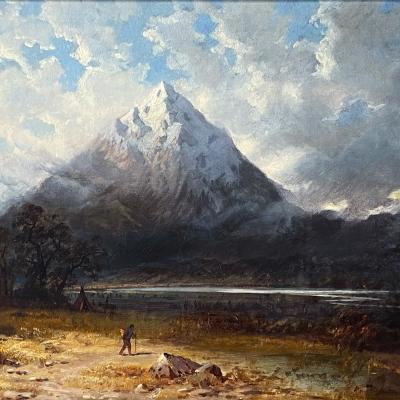artist
Vermont-born Harvey Otis Young moved to San Francisco at age 26, initially working as a decorator for horse-drawn carriages. By 1867, he had opened his own studio and began his career as a fine artist. In 1868, he joined the San Francisco Artists' Union and exhibited Vernal Fall at the 6th Mechanics' Institute Fair. The following year, his work was shown at the Snow & Roos Gallery.
In 1873, Young traveled to the Sierra Nevada to sketch, passing through Utah, Colorado, and New Mexico. That same year, Morris Schwab's gallery displayed Echo Lake, inspired by locations in California, Colorado, and Utah. Other notable works from this period include Great Blue Canyon, Sierra Nevada, and Rocky Mountain Scene, which prompted critic Trenton to describe them as evoking "the limitless expanse and remoteness of the frontier region."
Young briefly settled in Manitou Springs, Colorado, in 1879, where he focused on sketching landscapes for future commissions while exploring mining opportunities. During the 1880s, his artistic output dwindled as he became more involved in mining, with only occasional reports of his sketches from Colorado and New Mexico.
Despite this, Young remained influential in Denver’s art scene, exhibiting with the Paint and Clay Club and gaining recognition for his "fidelity to nature" and "spiritual content." In 1893, he joined the executive committee of the Artists' Club of Denver and served as a juror for its exhibitions in 1894 and 1895. The Artists' Club would later evolve into the Denver Art Museum in 1923.
Today, Young's work is held in the collections of the Denver Art Museum, the Colorado Springs Fine Arts Center, and the Kirkland Museum of Fine & Decorative Art.




















